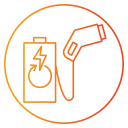Battery Health Basics: What You Can Control
Avoid living at 100% unless you’re about to hit the road. For routine use, moderate SOC ranges reduce stress on cells. Plan full charges strategically before trips. If your app supports it, use charging limits to make good habits effortless and automatic.
Battery Health Basics: What You Can Control
Heat accelerates cell aging, while extreme cold temporarily reduces power and range. Park in shade when possible, precondition before fast charging, and let the thermal management system do its job. Small choices stack up to meaningful, long-term battery health benefits.





